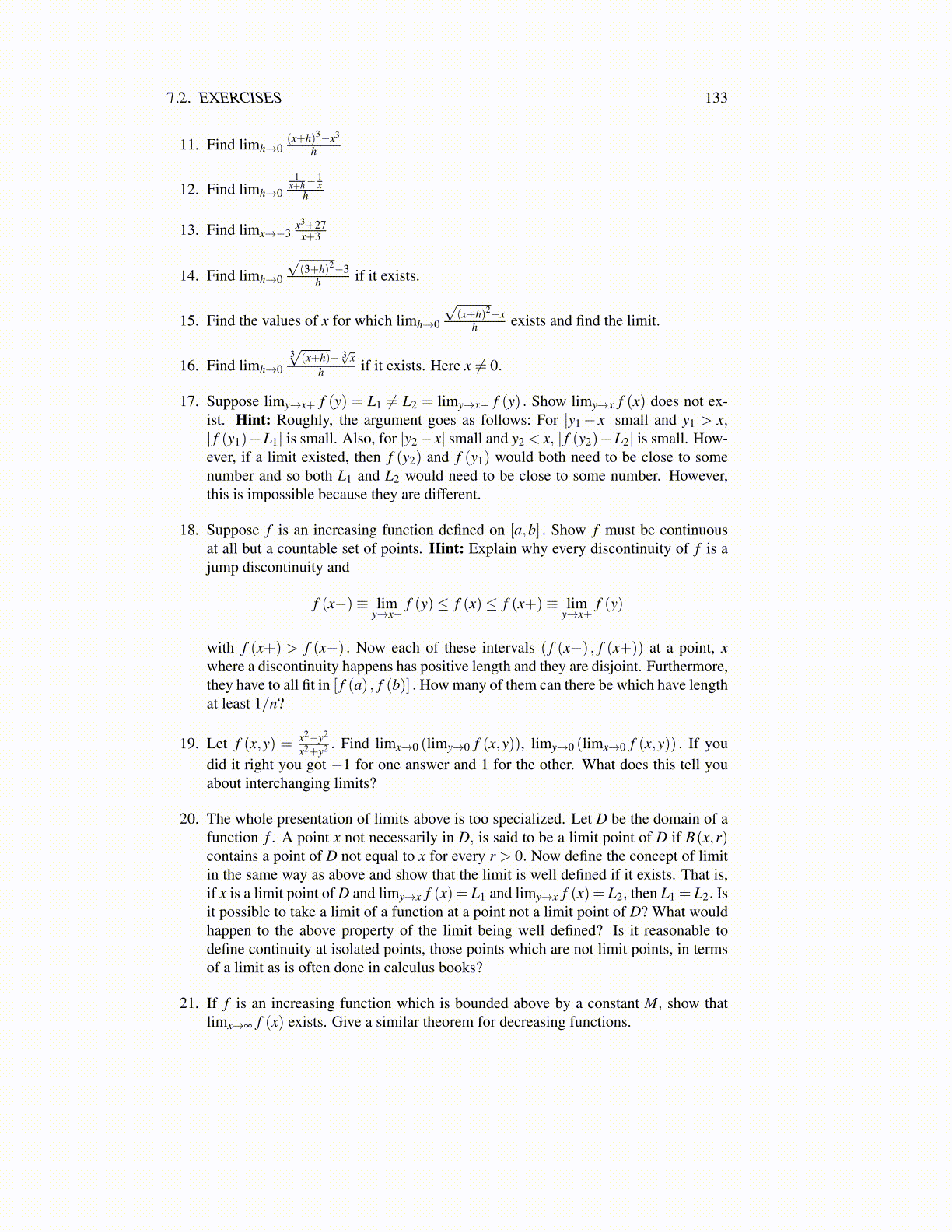
7.3. THE DEFINITION OF THE DERIVATIVE 133
tangent to y= 0 at the point (0,0). As explained above, the precise meaning of this functionbeing tangent as described is to have k (h) = o(h) . This motivates (I hope) the followingdefinition of the derivative which is the precise definition free of pictures and heuristics.
Definition 7.3.2 Let g be a F (either C or R) valued function defined on an openset in F containing c. Then g′ (c) is the number, if it exists, which satisfies
(g(c+h)−g(c))−g′ (c)h = o(h)
where o(h) is defined in Definition 7.3.1.
The above definition is more general than what will be extensively discussed here. Iwill usually consider the case where the function is defined on some interval contained inR. In this context, where the function is defined on a subset ofR, the definition of derivativecan also be extended to include right and left derivatives.
Definition 7.3.3 Let g be a function defined on an interval, [c,b). Then g′+ (c) is thenumber, if it exists, which satisfies
(g+ (c+h)−g+ (c))−g′+ (c)h = o(h)
where o(h) is defined in Definition 7.3.1 except you only consider positive h. Thus
limh→0+
|o(h)||h|
= 0.
This is the derivative from the right. Let g be a function defined on an interval, (a,c]. Theng′− (c) is the number, if it exists, which satisfies
(g− (c+h)−g− (c))−g′− (c)h = o(h)
where o(h) is defined in Definition 7.3.1 except you only consider negative h. Thus
limh→0−
|o(h)||h|
= 0.
This is the derivative from the left.
I will not pay any attention to these distinctions from now on. In particular I will notwrite g′− and g′+ unless it is necessary. If the domain of a function defined on a subset ofR is not open, it will be understood that at an endpoint, the derivative meant will be theappropriate derivative from the right or the left. First I need to show this is well definedbecause there cannot be two values for g′ (c) .
Theorem 7.3.4 The derivative is well defined because if
(g(c+h)−g(c))−m1h = o(h)
(g(c+h)−g(c))−m2h = o(h) (7.6)
then m1 = m2.